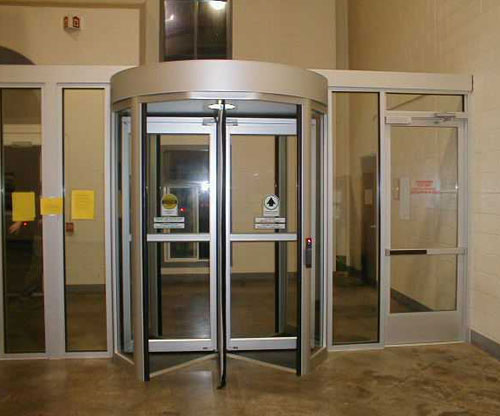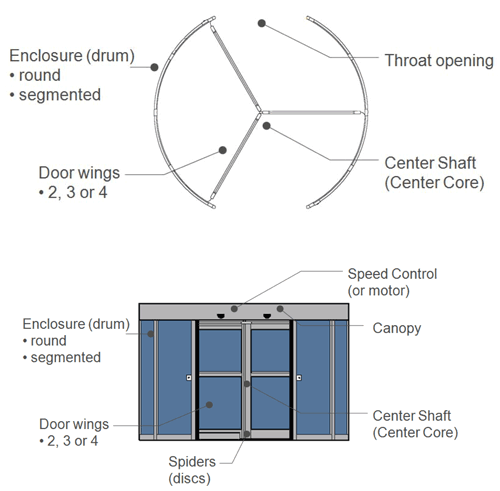Revolving Doors: A Greener, More Secure Environment
Learning Objectives:
- Differentiate between fundamental options for the design of revolving doors and identify common elements and terms as part of those design options.
- Examine the primary characteristics that contribute to safety in the design and operation of revolving doors.
- Assess the contributing factors in determining the most appropriate revolving door design choice for different installations and settings.
- Recognize and identify the contributing factors of cost effectiveness, function, and aesthetics that affect the total design and construction of revolving doors.
Credits:
What makes a revolving door unique? Is it because it’s always open (receptive to pedestrians) and always closed (shielding occupants from the outside elements)? Is it due to it being the only entrance door solution that actually pays for itself over time? Revolving doors are essentially a free standing vestibule that are eight times more energy efficient than either a slide or swing door system. On top of meeting the demands of energy efficiency and architectural appeal, revolving doors create comfort, improve traffic flow and increase security.
Revolving doors have been manufactured for over one hundred years. According to the Invent Now Hall of Fame, Theophilus Van Kannel was granted Patent number 641,563 in 1888 for a revolving door that helped alleviate several problems associated with conventional doors. It served as an airlock, preventing the rapid influx of cold air into warm buildings on chilly, windy days. The manual revolving door also kept street noises and fumes out. Eventually, the door proved particularly useful in skyscrapers where the pressure differences created by a large column of warm air inside the building and the outside cold air made conventional doors difficult to open or close. Moving from the small enclosed space of a revolving door into a lobby made the space seem large and majestic and hence appealed to architects.
Since that time, the basic function of a manual revolving door has remained the same. The general design of a revolving door eliminates drafts and keeps debris from entering a building thus providing a more comfortable environment for facility personnel.
More often today, revolving doors are viewed as a colder climate solution. With the recent heightened awareness of the need to conserve energy, revolving doors have become popular in warmer climates. Just as it is important to keep warm air in a building in colder climates, it is just as important to keep cool air inside the building in warmer climates. This can have a significant impact on the interior lobby temperature and contribute to a more comfortable environment. This is especially true for large lobbies and atriums.
In terms of security, over the past twenty years, Fortune 500 corporations and government agencies have been using revolving doors to protect its occupants in places such as corporate headquarters and airports. A revolving door has the unique ability to provide both security and energy efficiency in one product and at a lower cost of ownership (see Figure 1).
| Figure 1: Typical Configuration of Security Application Access Restricted to Authorized Personnel Only |
 |
| Diagrams of Typical Revolving Door Construction Terms Revolving doors are made up of the following components: |
 |









